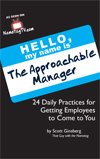
Ever seen people sport those bracelets that read, “W.W.J.D?”
They stand for “What would Jesus do?”
I remember when they got big in the 90’s. In fact, they’re still popular today.
Interestingly, I recently found out that this well-known phrase, deriving from the Latin imitatio dei, or “the imitation of God,” didn’t gain cultural popularity until 1896.
Credit goes to Charles Sheldon’s book, In His Steps, in which the subtitle was, “What Would Jesus Do?”
Anyway, that got me thinking. Not about Jesus or Christianity or religion.
But about making decisions. And HOW and WHY we make those decisions.
What about you? Have you ever thought about how and why YOU make decisions?
Here’s the secret…
If you TRULY want to convey a thorough understanding of yourself…
If you HONESTY want to create a good working model of your own identity…
If you SINCERELY want to maintain consistency and alignment of your actions…
You need to consider how you decide.
From the minute choices you make throughout the day, to your annual goal setting activities, to your major entrepreneurial or career decisions.
All of these choices fall under the umbrella of your Personal Guidance System. Your Opportunity Filter. Your Decision Tree of Life.
Now, you might not CALL it any of those things. In fact, I’d be willing to bet that less than 10% of the population has ever sat down and physically mapped out how they decide.
And for that reason, my challenge for you today is:
Physically create a governing document for your daily decision-making.
I just stumbled upon this process about six months ago myself. And I assure you it’s one of – if not THEE – most powerful exercises I’ve EVER executed for creating a good working model of my own identity.
Here’s how to do it:
1. Retrace your steps. Start by making a list of every single choice you made yesterday. What you ate, how you listened to people, which tasks your invested your time in, EVERYTHING. From the moment you woke up to the moment you went to bed. Now, obviously, you won’t be able to record EVERY choice. Just do the best you can.
2. Evaluate your process. For each item on your list, go back and think about HOW you actually made that choice. Ask yourself questions like:
a. Why did I make that choice?
b. What alternatives did I decide against?
c. Whom or what did I model my choice after?
d. What questions did I ask myself before choosing?
e. What thought processes did I take myself through?
It’s just like being a contestant on Millionaire: Four answers. Three lifelines. And you explain your decision-making process in real time to the host and audience so you can make an informed decision. “Well Regis, I know the answer’s not Lithuania because I’ve visited that country before … and I don’t think the answer is Latvia because I did paper on their government when I was in college, so…”
3. Dig for values. Once you’ve uncovered the HOW for each of yesterday’s decisions, it’s time to find out WHY. Ask yourself questions like:
a. What values were those choices rooted in?
b. What commonalities did all of my choices contain?
c. Where did I learn how to make that kind of choice?
d. And what words governed the questions I asked myself when I made those choices?
4. Categorize and document. OK! At this point, you should have a pretty solid idea HOW and WHY you make decisions. The final step is to map out your Official Governing Document. You can name it whatever you like, i.e., “Sara’s Personal Guidance System,” “Mark’s Opportunity Filter,” “Deb’s Decision Tree,” whatever.
Now, in terms of design, that’s entirely up to you. Depending on your learning/personality style, you might try mind-maps, decision trees, self-talk scripts, affirmations or visual thinking diagrams. Personally, the structure I used was twofold:
FIRST: Extract the ten core philosophies/values/virtues behind all of my choices, i.e., “Writing is the basis of all wealth.”
SECOND: List all the questions I might ask myself that reflect such values, i.e., “Is everything you know written down somewhere?”
5. Reinforcement and accountability. Cool. You’ve assembled your governing document for daily decisions making. Now, keep in mind – this WILL change over time, as your values will change over time. So, be sure to think of it as a draft.
Meanwhile, if you really want to blow people away, I challenge you to keep a copy of this document in your wallet or on your office wall. Look at it daily. Share it with those who inquire. Do this exercise with a partner or team if you want.
Not only will these measures keep you accountable and consistent, but they will also inspire all who see it to make a similar self-assessment of their own decision-making.
REMEMBER: The ONLY thing in this world you have ANY control over … is your choice.
So, doesn’t it make sense to map out HOW and WHY you make those choices?
Doesn’t it make sense to start asking yourself, “W.W.I.D?” or “What would I do?”
Maybe we should be wearing bracelets like that.
LET ME ASK YA THIS…
How do you make decisions?
LET ME SUGGEST THIS…
For the list called, “29 Pieces of Simple, Easy Advice That Will Change Your Business Forever,” send an email to me, and you win the list for free!
* * * *
Scott Ginsberg
That Guy with the Nametag
Author, Speaker, Coach, Entrepreneur
[email protected]
 If they can’t come UP to you; how will they ever get BEHIND you?
If they can’t come UP to you; how will they ever get BEHIND you?
Buy Scott’s new book and learn daily practices for becoming a more approachable manager!
Pick up your copy (or a case!) right here.
